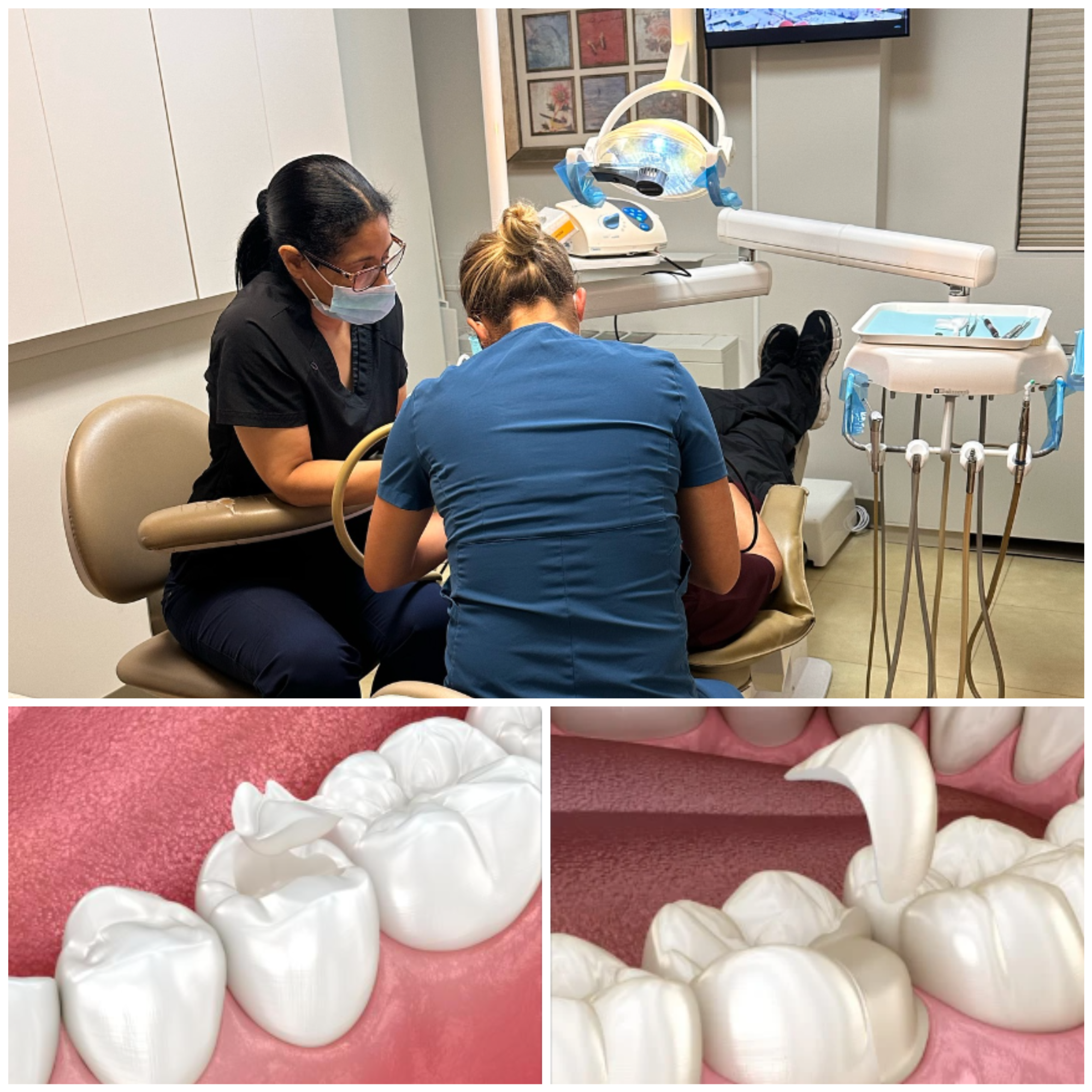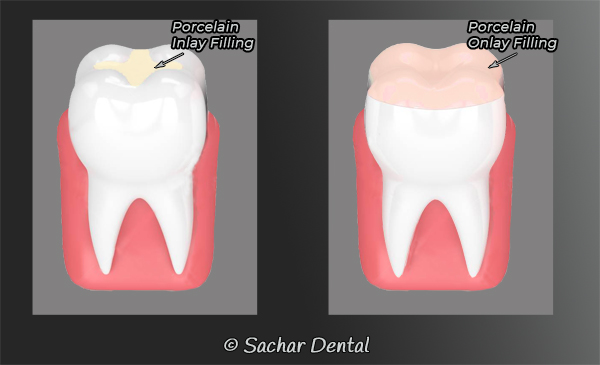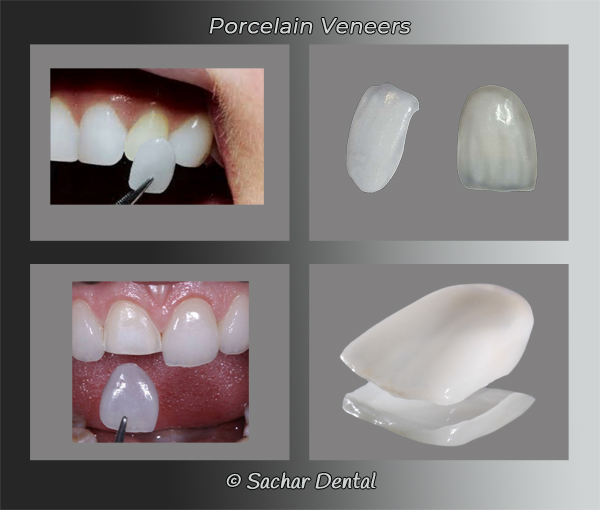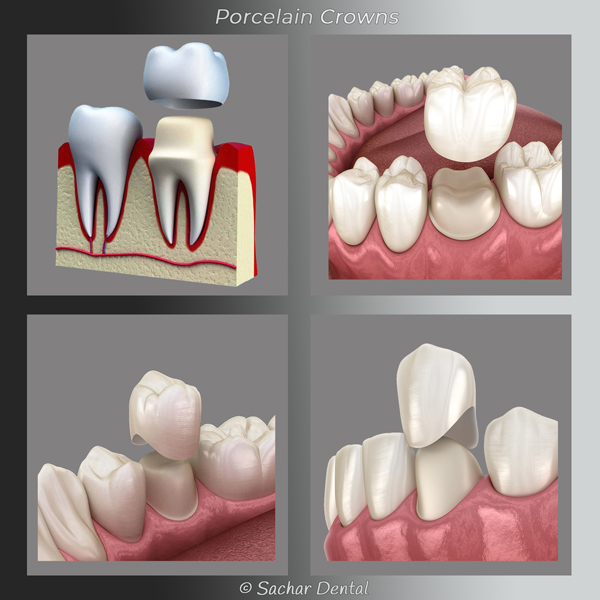Sachar Dental NYC
For SAME day / emergency appointments
Call (212) 752-1163
All the below content has been written by NYC Dentist, Dr. Sandip Sachar.
Inlay vs. Onlay: Which Dental Restoration Is Right for You?
Inlay vs. Onlay Restoration: A Comprehensive Guide
Dental restorations play a crucial role in maintaining oral health and aesthetics. Inlays and onlays are dental restorations used to repair teeth that have suffered moderate damage or decay. They provide a middle ground between fillings and crowns, offering a durable and aesthetically pleasing solution for restoring the function and appearance of teeth. At Sachar Dental NYC, we specialize in these restorations, providing top-quality care to our patients. Let’s explore what sets inlays and onlays apart and how they can benefit your dental health.

What Are Inlay and Onlay Restorations?
Inlays and onlays are custom-made dental restorations used to repair damaged or decayed teeth, primarily molars and premolars. Inlay and Onlays are used to restore a tooth when the damaged or decayed part of the tooth is too large to restore with a traditional filling but not broken down enough to require a crown. They are often referred to as "indirect fillings" because, unlike traditional fillings, they are fabricated outside of the mouth, usually in a dental laboratory, and then bonded to the tooth.
Inlays fit within the grooves of a tooth, filling the space between the cusps (the raised points on the biting surface). They are ideal for treating cavities or damage that do not affect the cusps of the tooth.
Onlays, also known as "partial crowns," extend over one or more cusps of the tooth. They are used when the damage is more extensive and involves the tooth’s cusps, providing additional strength and protection.

When Are Inlays and Onlays Used?
Inlays and onlays are recommended when a tooth is too damaged for a regular filling but not damaged enough to require a full crown. Some scenarios where they might be used include:
- Moderate Tooth Decay: When decay is too extensive for a traditional filling.
- Fractured Teeth: For repairing cracks or fractures that do not involve the entire tooth.
- Replacement of Old Fillings: When old fillings need to be replaced with a more durable solution.
- Cosmetic Enhancement: To improve the appearance of discolored or misshapen teeth.
The Materials Used for Inlays and Onlays
Inlays and onlays can be made from a variety of materials, including:
- Porcelain: Offers a natural look and is resistant to staining, making it a popular choice for visible teeth.
- Composite Resin: Provides a tooth-colored appearance and is less expensive than porcelain.
- Gold: Known for its durability and strength, though less aesthetically pleasing for front teeth.
Each material has its benefits, and the choice often depends on the location of the tooth, the extent of the damage, and the patient’s preferences.
The Procedure for Inlay and Onlay Restorations
The procedure for inlay and onlay restorations typically involves two visits to the dentist:
- First Visit:
- The dentist will remove any decay or damage and prepare the tooth for restoration.
- Impressions of the tooth are taken and sent to lab to create a custom inlay or onlay.
- A temporary restoration may be placed to protect the tooth until the permanent restoration is ready.
- Second Visit:
- The temporary restoration is removed, and the custom lab fabricated inlay or onlay is fitted to the tooth.
- The dentist ensures the restoration fits perfectly, making any necessary adjustments to bite and contacts.
- The inlay or onlay is bonded to the tooth using a strong dental adhesive, and the tooth is polished to achieve a natural look.
Benefits of Inlay and Onlay Restorations
Inlays and onlays offer several advantages over traditional fillings and crowns:
- Durability: Made from high-quality materials, they are more durable and longer-lasting than traditional fillings.
- Aesthetics: They are designed to match the color and appearance of natural teeth, providing a seamless look.
- Conservative Treatment: Inlays and onlays require less removal of the natural tooth structure compared to crowns.
Potential Risks and Considerations
While inlay and onlay restorations are generally safe and effective, there are some considerations to keep in mind:
- Cost: They can be more expensive than traditional fillings due to the materials and custom fabrication process in a lab
- Multiple Visits: The procedure typically requires at least two visits to the dentist unlike a traditional filling that is completed in one visit.
- Potential for Decay: Inlays and Onlays are technique sensitive and the skill set of the dentist plays an important role in the success of these restorations. If not properly fitted, sealed or maintained, there is a risk of decay developing on the tooth under the restoration.
How to Care for Inlays and Onlays
Proper care and maintenance are crucial to ensure the longevity of inlay and onlay restorations. Here are some tips:
- Good Oral Hygiene: Brush and floss regularly to prevent plaque buildup and decay around the restoration.
- Regular Dental Check-Ups: Visit your dentist regularly for cleanings and examinations to monitor the condition of the restoration.
- Avoid Hard Foods: Avoid biting on hard objects like ice or pens that could damage the restoration.
Inlays vs. Onlays: Key Differences
While inlays and onlays serve similar purposes, they differ in terms of coverage and application:
- Coverage: Inlays fit within the cusps of a tooth, while onlays extend over one or more cusps, providing additional coverage.
- Application: Onlays are used for more extensive damage, offering additional strength and protection to the tooth structure.
Veneers vs. Crowns vs. Inlays and Onlays
Understanding the differences between these dental restorations can help you make informed decisions about your dental care:
- Veneers: Thin tooth-colored shells that cover the front surface of teeth, primarily for cosmetic purposes.
- Crowns: A cap that covers the entire tooth, used for significant damage or decay.
- Inlays and Onlays: Used for moderate damage, providing a balance between fillings and crowns.


Why Choose Sachar Dental NYC for Inlay and Onlay Restorations
At Sachar Dental NYC, we provide the highest quality dental care to our patients. Here’s why you should choose us if you’re looking for a dentist in New York City who specializes in inlay and onlay restorations.
- Expertise: Dr. Sachar and the expert team of top-rated NYC dentists, have extensive experience in restorative dentistry and inlays as well as onlays, ensuring the best possible outcomes for our patients.
- Advanced Technology: We use digital scans and 3D printing as well as other state-of-the-art equipment and techniques to ensure precise and effective treatments.
- Patient-Centered Care: Our focus is on providing personalized care tailored to each patient’s needs, ensuring a comfortable and positive experience.
- Comprehensive Services: From consultation to aftercare with our NYC dentist team , we offer a full range of services to ensure optimal results.
Daryl’s Experience
Daryl had a persistent ache in his molar that was starting to cause concern. After hearing about Sachar Dental NYC from a coworker, he decided to schedule an appointment.
During his initial consultation, Dr. Sachar thoroughly examined his teeth and identified a large cavity in Daryl's molar. Given the extent of the damage, Dr. Sachar recommended an onlay to restore the tooth. In this case the decay was too large to restore with a traditional filling but not large enough to require a crown. Dr Sachar believes in being conservative and preserving as much healthy tooth structure as possible. And in order to restore this tooth with a crown, a lot more drilling of healthy tooth would be needed to make room for the crown to go over the tooth. A traditional filling would not give the tooth the strength required.
Dr. Sachar explained the procedure in detail and assured Daryl that this was the best treatment option in this particular case.
All decay was first removed and the tooth was prepared. An impression of Daryl's tooth was then taken to create a custom onlay in the lab. A temporary onlay was placed over the tooth that protected his tooth while lab prepared the onlay. When the custom onlay was ready, Daryl returned a few days later, for the final placement. The fit was perfect, and the onlay blended seamlessly with his natural teeth. Dr. Sachar made sure the margins were all fully sealed and bite and contacts were good.
Daryl was thrilled with the results. The ache was gone, and his tooth looked as good as new. He has since sent us many of his friends and coworkers for dental care who are in search of a good dentist.
Experience Top-Quality Inlay and Onlay Restorations at Sachar Dental NYC
If you are considering inlay and onlay restorations, schedule a consultation with NYC dentist, Dr. Sachar and the expert team at Sachar Dental NYC today. Our commitment to excellence and patient satisfaction ensures you will receive the best possible care. Let us help you achieve a healthy, beautiful smile that lasts for years.
READ MORE about Inlay & Onlay Restorations on our services page.
Sachar Dental NYC
20 East 46th Street
Rm 1301
(Between 5th Ave & Madison Ave)
New York, NY 10017
212-752-1163
https://www.sachardental.com
drsachar@sachardental.com